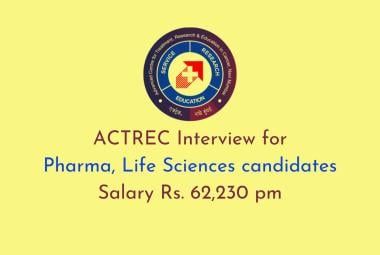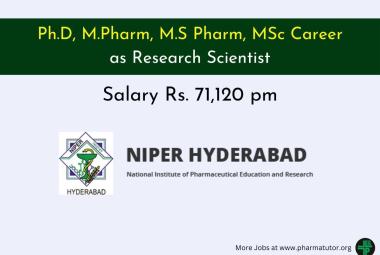When a light passes through absorbing medium at right angle to the plane of surface or the medium or the solution, the rate of decrease in the intensity of the transmitted light decreases exponentially as the thickness of the medium increases arithmetically.
Accordingly, Lambert’s law can be stated as follows:
“When a beam of light is allowed to pass through a transparent medium, the rate of decrease of intensity with the thickness of medium is directly proportional to the intensity of light.”
Mathematically, the Lambert’s law may be expressed as follows.
- dI / dt α I
-dI / dt = KI . . . . . . . . . .(1)
Where I = intensity of incident light
t = thickness of the medium
K= proportionality constant
By integration of equation (1), and putting I=I0 when t=0,
I0/ It = kt or It= I0 e-kt
Where, I0 = intensity of incident light
It = intensity of transmitted light
k = constant which depends upon wavelength and absorbing medium used.
By changing the above equation from natural log, we get,
It = I0 e-Kt . . . . . . . . . .(2)
Where K = k/ 2.303
So, It = I0 e-0.4343 kt
It = I010-Kt . . . . . . . . . .(3)
[adsense:336x280:8701650588]
Beer’s law may be stated as follows:
“Intensity of incident light decreases exponentially as the concentration of absorbing medium increases arithmetically.”
The above sentence is very similar to Lambert’s law. So,
It = I0 e-k' c
It = I0 10-0.4343 k' c
It = I0 10 K' c . . . . . . . . . .(4)
Where k' and K'= proportionality constants
c = concentration
By combining equation (3) and (4), we get,
It = I0 10 -act
I0 / It = 10 act
Where, K and K' = a or ε
c = concentration
t or b = thickness of the medium
log I0 / It = εbc . . . . . . . . . .(5)
Where ε = absorptivity, a constant dependent upon the λ of the incident radiation and nature of absorbing material. The value of ε will depend upon the method of expression of concentration.
The ratio I0 / It is termed as transmittance T, and the ratio log I0 / It is termed as absorbance A. formerly, absorbance was termed as optical density D or extinction coefficient E. the ratio I0 / It is termed as opacity. Thus,
A = log I0 / It . . . . . . . . . .(6)
From equation (5) and (6),
A = εbc . . . . . . . . . .(7)
Thus, absorbance is the product of absorptivity, optical path length and the concentration of the solution.
The term E1%1 cm or A1%1 cm refers to the to the absorbance of 1 cm layer of the solution whose concentration is 1 % at a specified λ.
According to equation (7),
A = log I0 / It
Transmittance T is a ratio of intensity of transmitted light to that of the incident light.
T = I0 / It
The more general equation can be written as follows:
A = log I0 / It = log 1/ T = – log T = abc = εbc
FIND MORE :-
| Theory of Spectroscopy | Types of Transition |
| EMR Spectra | Instrumentation |
| Effect of Solvent | Applications |











